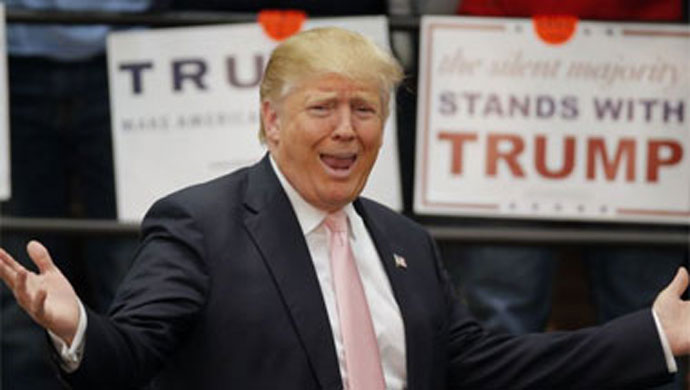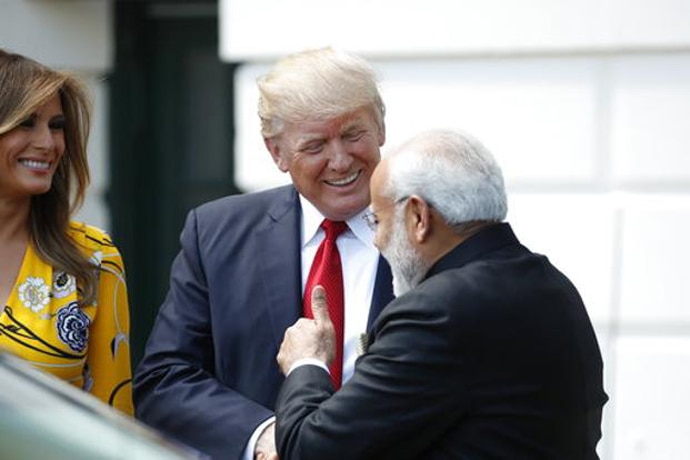More US curbs on H1-B visas mean a world of woes for Indian techies and their spouses

To say it wasn’t entirely expected, is to live in a fool’s paradise. But to say that it wasn’t expected this soon, would be correct still. The Donald Trump administration’s continued assault on the transatlantic liberal visa regime - to get highly qualified foreign workers, chiefly Indians and Chinese, for jobs requiring specialty in theoretical and technical subjects, mostly finance and engineering - is on.
In fact, since last year itself, Trump has been sounding the drums of his protectionist campaign promise: “Buy American, Hire American”. Within two months, in March 2017, it was ruled by the Department of Homeland Security that the US Citizenship and Immigration Services (USCIS) would no longer be issuing H1-B visas to “an entry-level computer programmer… who would not qualify as a specialty occupation”.
While that impacted the fresh applications, about 85,000 H1-B visas annually, the present spate of restrictions are going to hit the Indian techies and their spouses working in the United States like the iceberg hit the RMS Titanic.
No extension to H1-B visas
Fresh reports have underlined that the Trump administration would not be giving extensions to H1-B visas in case the green card (application for permanent residency) in under process. Since the H1-B is given on a three-year or six-year term (via an extension), by the time the green card is applied for, it’s at least six years. During the liberal Barack Obama regime, the practice of extending the H1-B visa indefintely if the green card is under process was prevalent, benefiting the lakhs of NRIs working there.

However, Donald Trump is hell-bent on turning back many of those beneficial rulings, including scrapping the significant 2015 legislation of allowing the spouses of the H1-B visa holders to work in the USA, under the special H-4 visa. In fact, almost 90 per cent of the H-4 visa holders happen to be women, while 80 per cent of them are Indians.
This, along with “scrutinising” the H1-B applications in a far more stringent manner, under the garb of “preventing misuse and abuse” of the visa regime, is underway, thereby increasing the possibility of sending as many as five lakh Indians in the US back home. This is the “skilled workforce” that was the most sought after in the Bush and Obama years, sending as many to the United States to work and practically propping up the Silicon Valley with efficient, cost-effective work.
Skilled Indians versus unskilled Americans
India and China made up 82 per cent of the H1-B visas in 2016, and it seems the well-earned concession was because of the English fluency and educational competence of the professionals from these two countries. However, once the new rulings take into effect, the H1-B visa holder will have to exit the US, along with the spouse working under the H-4 visa, while the green card is under consideration.
However, the US doesn’t even produce enough graduates in the STEM subjects (science, technology, engineering and mathematics) to fill the enormous lacuna in the US skilled workforce section. That the H1-B visa was anyway never in the way of white working class Americans, since many of them weren’t even qualified to be considered for the jobs on the plate, is something the Trump administration is hardly commenting upon.
Technically, the Trump administration is harping on the H1-B visa being a channel to fill the skilled workforce shortage in specialised jobs, and not become a sure-shot route to immigration via due process. While that might be correct, Indian immigrants have made a staggering contribution to the US tech industry, literally being the spine of the Silicon Valley.
Propping up Silicon Valley
The two biggest Silicon Valley companies are currently headed by Indian immigrants: Satya Nadella leading Microsoft and Sundar Pichai heading Google. And, this has been made possible by a liberal visa regime strengthened under the Bush and Obama years, to ensure US became a great attractor of foreign talent.
While Donald Trump’s ritual assault on the relatively free movement of people from and to the United States - starting with his much-criticised “Muslim ban”, which prevented citizens of seven, Muslim-dominated countries from entering the US for a period of 90 days, to his administration’s serial tweaking of the H1-B visa norms, have been explained away as Trump’s economic protectionism, they are as racist and politically motivated as most of his other policies, including domestic legislations.
Cutting taxes of the wealthiest among Americans, almost scrapping Obamacare and snatching away health insurance coverage from the poor and middle class people, are symbolic of Trump’s economically pro-rich policies, while exploiting the anxieties of the weaker sections, fueling the fire of their misplaced anger at the highly skilled immigrants.
In fact, Trump’s campaign was based on the “white backlash”, in which expressing racism became legitimised because that’s how the then president-aspirant and later, the 45th POTUS spoke without compunction.
What about Modi factor?
While Trump tweets about ending military aid to Pakistan and that’s lapped up by the Indian newsrooms as great news, the real blow to Indians working in the US has been coming in installments. It seems Modi-Trump bonhomie has come to a naught despite the POTUS calling India a “natural strategic partner” during Modi’s visit to the US, followed by Ivanka Trump’s India trip for the Global Entrepreneurship Summit in Hyderabad.

In addition, even Australia under Prime Minister Malcolm Turnbull has scrapped the 457 visa scheme, which allowed thousands of Indians to work and live in the country. This global anti-immigrant tide is impacting not only war-torn countries, but developing economies such as India and China, which constitute a bulk of the global professional workforce.
Already, significant drop in the H1-B visa applications has been reported. Now with the fate of H1-B visa holders becoming more and more uncertain, denying the natural extensions, and disallowing the spouses to work under the H-4 visa scheme, it will be a rising tide of disgruntled highly skilled Indians returning home, disenchanted with the American dream.
Given the Indian job market is down, and private investment is at 13-year low, the scenario is grim, to say the least.

